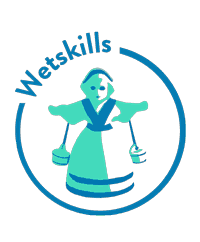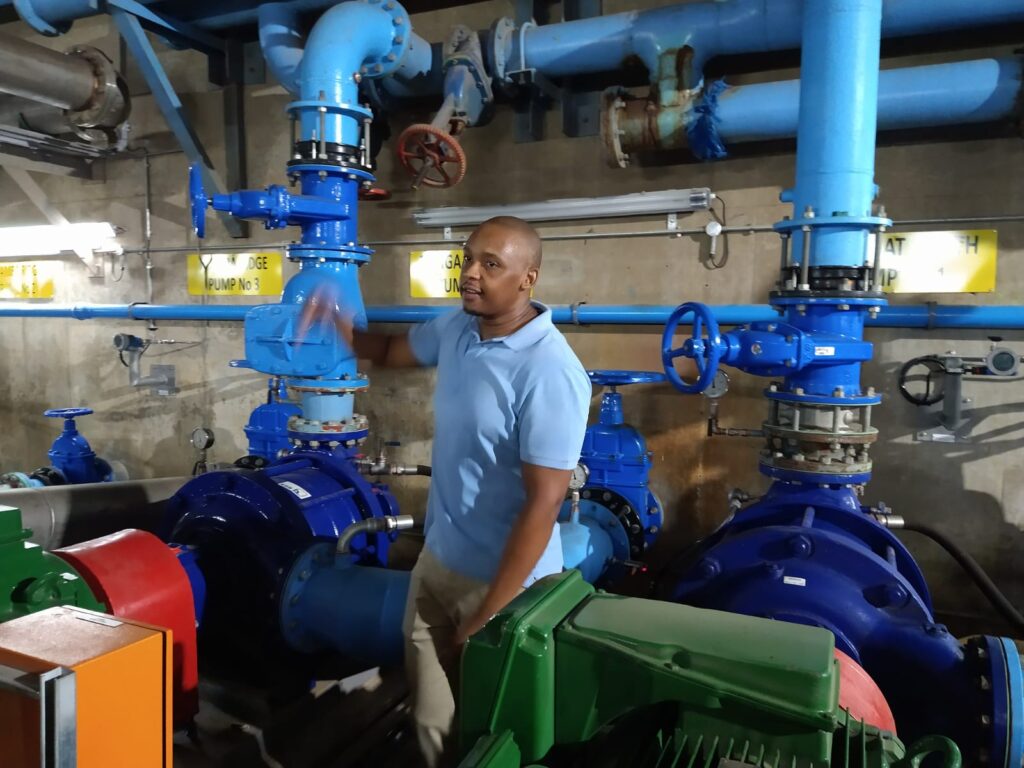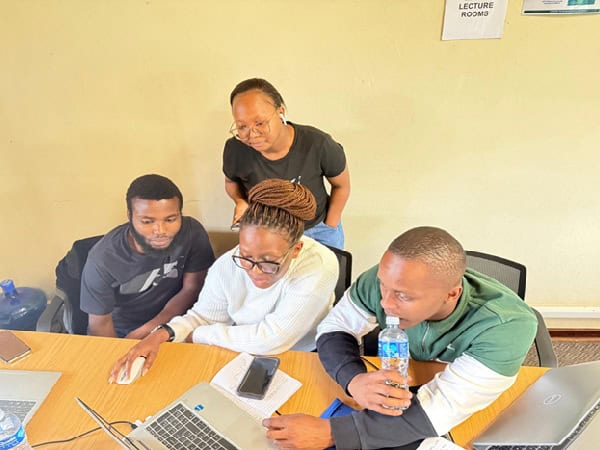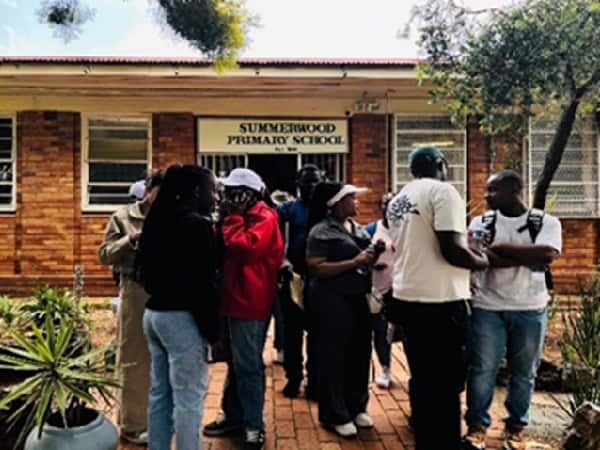Monday 29-May
By Remco Belonje and Lufuno Munzhelele
| The morning heralded in a sunny day, starting at the Wetskills hostel with tasty breakfast and good conversation. At half past eight, with the sun already reflecting brightly off the Indian ocean, we left for the first stop of the day.
After a short half-hour drive, we arrived at the Tongaat Water Treatment Facility (WTF), where they purify raw river water into drinkable water for the surrounding area. Lunga, the superintendent of the facility, showed us the different process steps by which they treat the water. He started by taking us to the inlet, which is the entry point of the river water into the facility. This was followed by the dosing of the water by polymers to avoid flocculation. The dosed water is equally distributed into six clarifiers for settlement of sediments, while the clean overflow flows out through the small holes of pipes placed at the surface of the clarifiers. Thereafter, through gravity it flows through six filters that have fine sand at the bottom for filtration purposes. Water from the filters is then pumped into underground storage.
Lunga took us down to the pumping room, where the treated drinking water from the underground storage gets distributed. Here many huge pumps make sure that all areas serviced by the Tongaat facility receive clean, drinkable water.
After the visit to the water treatment facility, we left for the Tongaat wastewater treatment facility to observe the process by which wastewater gets cleaned. At the facility, we are shown around by Themba and Morganchetti, respectively the superintendent and the senior process controller at the facility. It receives the vast majority of its waste water from domestic sources, with a small minority coming from industries, mainly sugarcane production. The water enters the facility through the inlet for screening purposes which includes the removal of diapers, rocks, dead animals and other unwanted objects. The water gets transported up the slope via two Archimedes’ screws.
Thereafter, the wastewater flows to the aeration pond. The aeration pond has three motors fitted with brushes at the bottom of the aeration pond. The purpose of the brushes is to keep the bacteria suspended and in motion for the breakdown of the sludges in to small invisible pieces. After the aeration ponds, the water gets filtered and then gets gravitated to a chlorine house for dosage with chlorine for disinfection.
At the end of the process, the wastewater gets released into the Emona river, where some of this water gets reused by the Tongaat Water Treatment Facility we visited earlier, closing this very important cycle of water.
After the visit to the wastewater treatment facility, it was time for lunch. Since Durban has a large Indian diaspora, we went for a traditional Indian-South African dish: bunny chow. This dish, consisting of a hollowed-out loaf of bread filled with spicy mutton, chicken or vegetarian curry, proved to be a very tasty meal.
After lunch, we finished the day program with a teambuilding exercise. Each WetSkills case team got a list of bizarre challenges to complete together, challenging the creativity of the team and strengthening its bond. Two things we will very much need in the coming two weeks in order to bring our cases to a successful conclusion and win the WetSkills challenge!



